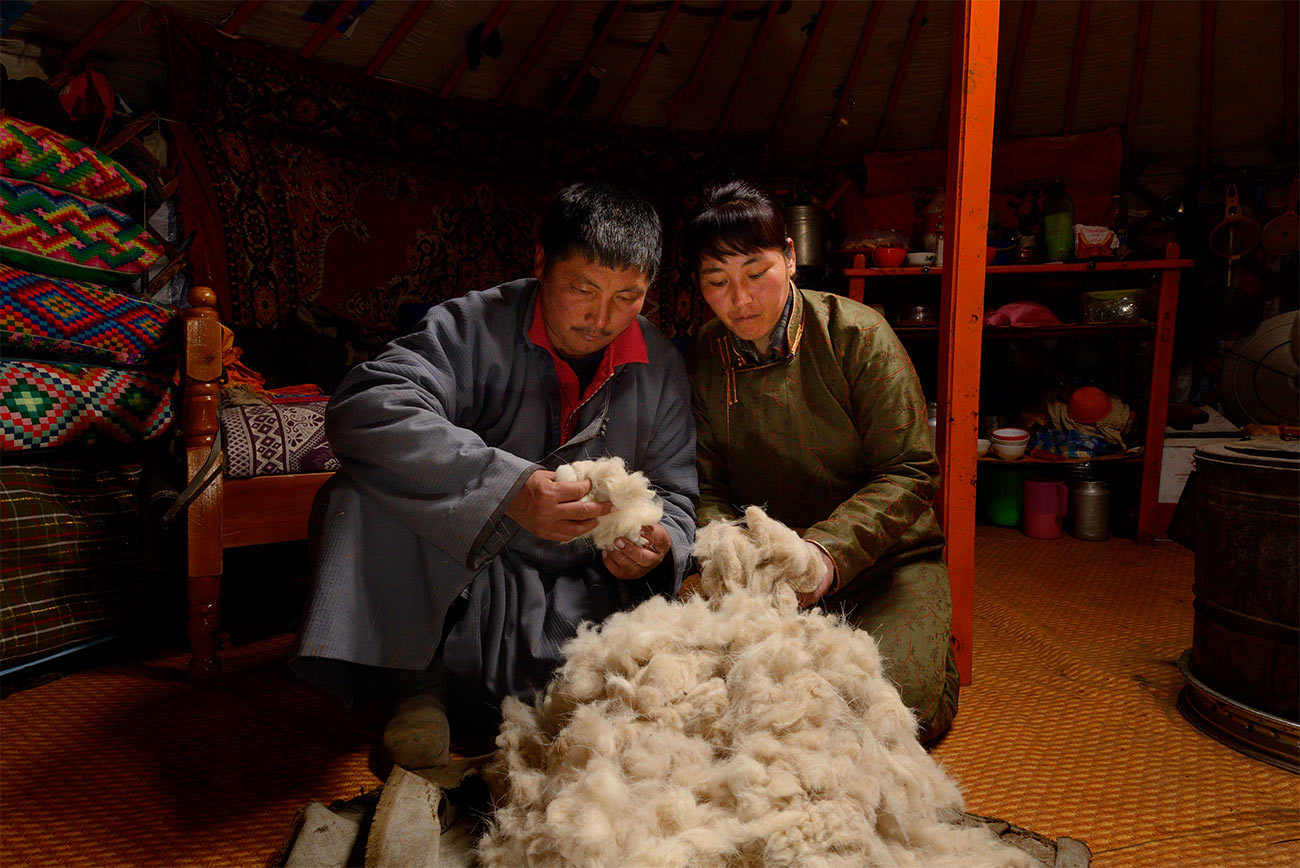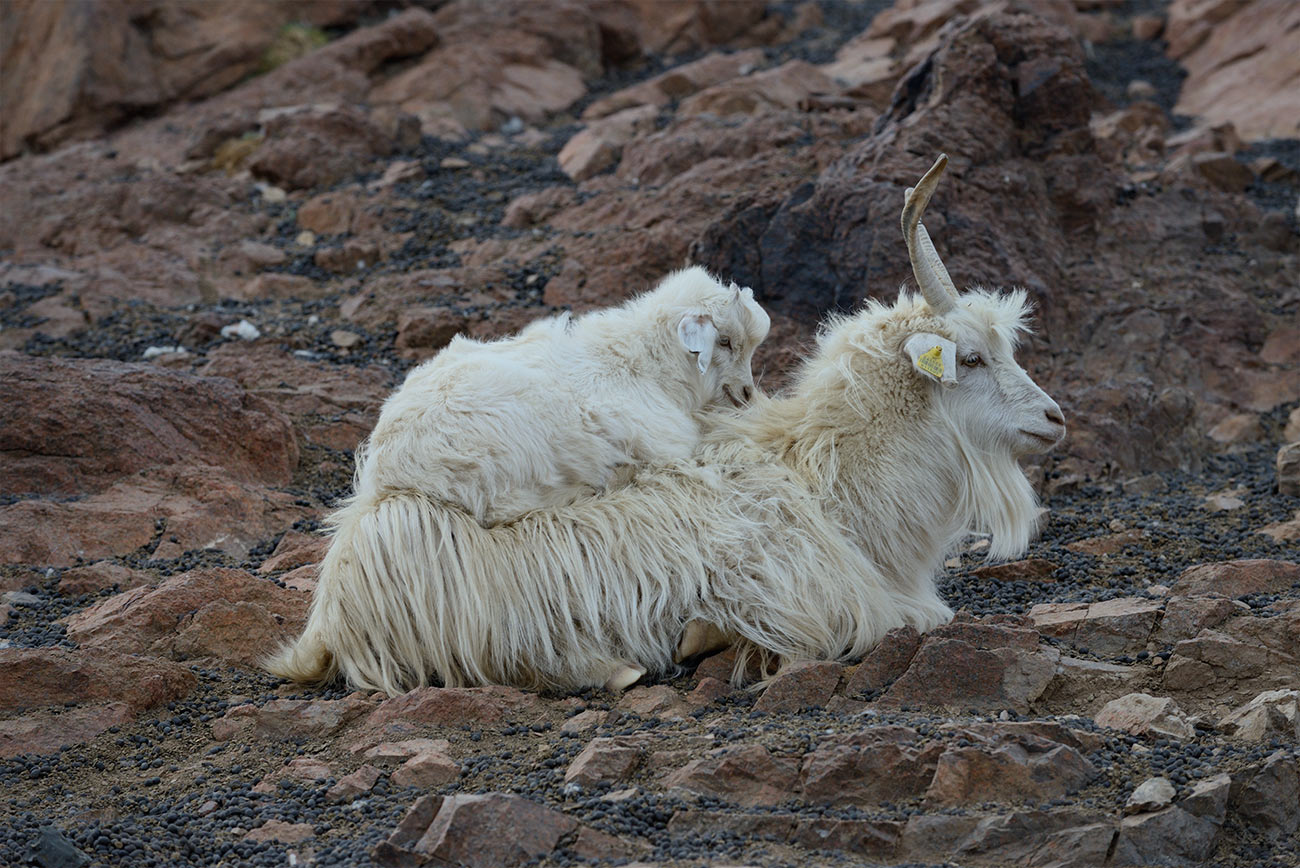>MONGOLIA (#CASHMERE)
Rare and precious.
Incomparably light and soft.
In the heart of Mongolia’s Gobi Desert, rugged nomads produce the very finest cashmere wools. Rare and precious, cashmere wool is incomparably light and soft. The region is one of the birthplaces of goat-rearing and as has always been the case, wool goats move between their summer and winter pastures where they are still free to roam. Seasonal temperatures at an altitude of over 4,000 metres on the Tibetan plateau or in the Gobi Desert can range from -40°C to +40°C! The goat has adapted to these conditions and its long coat helps it to withstand the harsh climate.
The cashmere fiber is harvested from the goats’ chests once a year by the nomadic tribes of the region. The harvest is no more than 150g of fibers per animal.
Today, there are three colours of cashmere goat – black, tan and white – which give dark grey, grey-brown and white wools respectively. The white goats are originally from the Gobi and the mountain shepherds of Arkhangai have to buy goats from their desert counterparts to ensure this prized quality in their own herd.

Local Breeders
Local breeders&families in Mongolia inspect the newly harvested white cashmere. Their life is based on the white goats.
Having their home and pasture distant hours of car ride from the nearest village is quite common for them.

